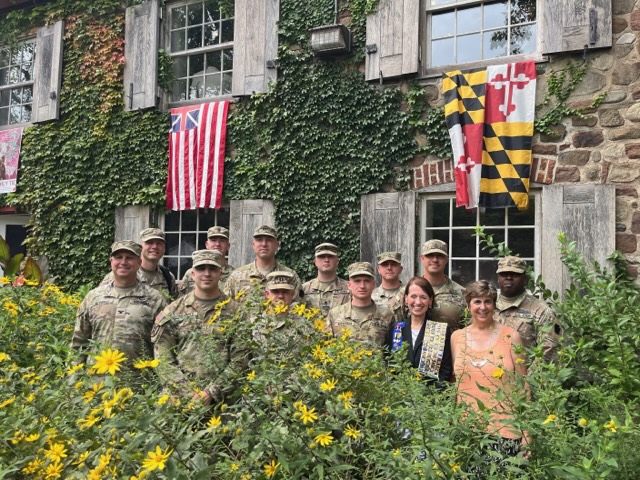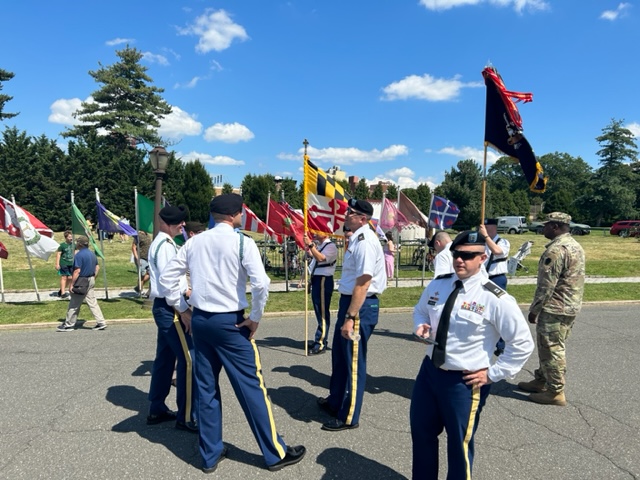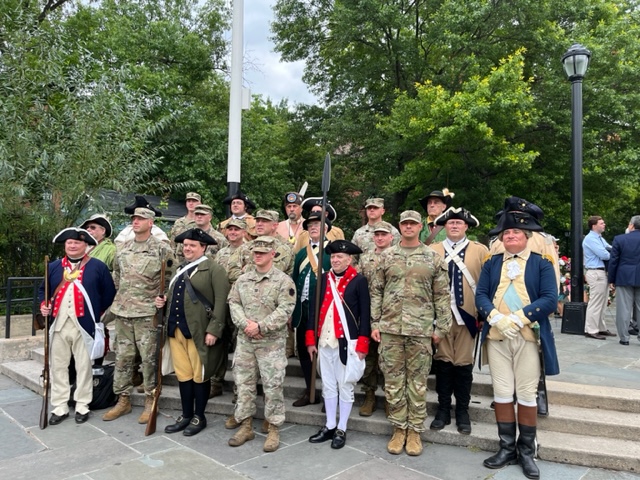175th Infantry Battalion Guardsmen Honor their Lineage
- Blake Thacker
- Sep 9, 2023
- 3 min read
On August 26th and 27th, ten members of the 175th Infantry Battalion participated in two ceremonies honoring the Maryland regiment that, on August 27, 1776, saved the fledgling American army from complete annihilation. On that day in 1776, the fate of the newly declared United States rested upon the shoulders of about 400 farmers, merchants, and shopkeepers from Maryland who unhesitantly accepted this suicide mission, ultimately sacrificing 256 of their own to give their fellow comrades in arms a chance to continue the fight for freedom and liberty.
Maj. Sean Gramm, executive officer of the 175th led the Brooklyn trip. He recognized the importance of having 175th Guardsmen participate in the Battle of Brooklyn commemoration. “It fosters a positive connection with the community, allows us to walk the ground that is so critical to our identity as Maryland Guardsmen, and supports civilian efforts to recognize those who died upholding the values of freedom and self-determination,” he said.
In August of 1776, Britain assembled the largest fleet since the Armada to blockade the harbor and gathered 30,000 regulars and Hessian mercenaries to quickly end the uprising. Washington met the British army at Brooklyn and Manhattan with 19,000 soldiers from the newly formed Continental Army and nearby militia units. He placed 9,000 troops in Brooklyn to defend it as long as possible, while the remainder stayed in Manhattan. MG Israel Putnam and 6,000 troops defended rear Brooklyn fortifications while Lord Stirling and MG Sullivan with 3,000 Maryland, Delaware, and Pennsylvania militiamen took the forward position at Gowanus Heights on the south and east sides of Brooklyn. Maryland and Delaware combined into one battalion was led by Marylander Maj. Mordecai Gist, and protected the extreme right flank and center, while Pennsylvania defended the left flank. On paper it looked solid. In reality, however, the British successfully encircled the Pennsylvanians and by 0800 on the 27th, the Americans realized they were surrounded and ordered retreat to the rear fortifications. However, the only avenue of retreat was across the Gowanus Creek. The route to the creek was over a road that ran past a stone house occupied by British infantry with two cannons on the second floor.
Washington ordered the Maryland Regiment of about 400 soldiers to assault the stone house, directing the British fire away from the retreating army. Unhesitatingly, the Maryland militia charged the house once, twice, three times, four times, five times. As they faced fire from the front, Hessians attacked from the rear. Twice the house briefly changed hands. When the Marylanders ran out of ammunition, they charged with bayonets. Gist continued the assault until he was assured that the rest of the army was safely across the Gowanus Creek. Only then were the Marylanders allowed to retreat across the slimy marsh as British sharpshooters fired upon the retreating soldiers. No more than twelve from the original 400 Marylanders safely made it across the Gowanus Creek that day, among them Maj. Mordecai Gist. As Washington watched the unfolding slaughter from the fortifications, he was heard to exclaim, “Good God, what brave fellows I must this day lose!”
Brooklyn annually commemorates the event at the same stone house where Maryland assaulted the British, and at Battle Monument in Prospect Park. This is the first time that Maryland Army National Guard’s 175th officially participated. After attending individually in 2019, Battalion Commander, LtCol. Alexi Franklin determined to support the event by sending a contingent of Guardsmen to Brooklyn. A student of his unit’s history, Franklin observed that, “The event is important because it commemorates our unit. It’s a little-discussed but fundamental battle that helped our nation achieve independence.” He stressed that Maryland earned its nickname, “Old Line State,” as a result of Gen. Washington noting in admiration that Maryland held the line. Washington would continue the new nation’s battle for freedom because of the sacrifices of the soldiers who belonged to the unit from which the 175th draws its lineage.
Maryland National Guard Command Historian, Dr. Julie Shively, and former 175th Battalion commander, Col. John McDaniel, accompanied the Guardsmen and provided background information about the battle and the importance of recognizing the brutal sacrifices of their unit-forebearers. On the return trip, Sergeant 1st Class Hugh McCall, B/1-175th summed up the trip: “This is what keeps the lineage alive.”

























Comments